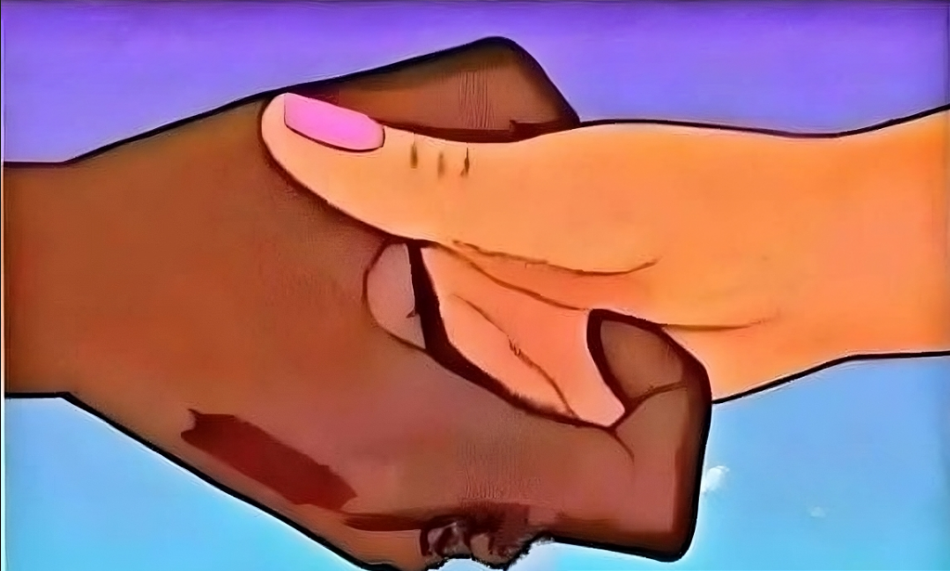Small gestures often hold more meaning than we initially perceive, and one such seemingly trivial act—scratching the palm of a woman’s hand—has sparked curiosity and speculation for generations. While it may seem innocuous at first, this subtle act can carry varying connotations depending on cultural context, personal intention, and the dynamics of the relationship between the individuals involved.
Let’s unravel the layers behind this intriguing gesture to better understand its potential meanings and implications.

A Gesture Rooted in Subtle Communication
Human interactions are rich with unspoken cues, where body language and touch often say what words cannot. Scratching someone’s palm is one such act that has been interpreted as a form of silent communication. In some instances, it is seen as a covert signal of romantic or sexual interest. The gesture’s subtlety allows it to bypass verbal barriers, creating an intimate moment that carries undertones of attraction.
In cultures where open expressions of affection may be discouraged, this small act becomes a private message. It can signify curiosity, playfulness, or even a desire to deepen a connection, making it a favored gesture for those navigating the complexities of early-stage attraction.
Cultural Interpretations of a Palm Scratch
Cultural norms heavily influence how gestures like a palm scratch are perceived. For example, in certain regions, scratching the palm during a handshake or while holding hands might be considered flirtatious, akin to a non-verbal “I’m interested in you.” This interpretation often carries a lighthearted, cheeky undertone, used intentionally to gauge the other person’s reaction.
However, not all cultures assign meaning to this gesture. In some parts of the world, a palm scratch is seen as nothing more than an unconscious action—perhaps a nervous habit or a response to physical discomfort. The key to understanding lies in knowing the cultural backdrop against which the gesture is made.
The Role of Context in Decoding the Gesture
Context plays a pivotal role in determining whether a palm scratch carries any significance. In informal or social settings, especially those charged with playful banter or flirtation, such an act might be more readily interpreted as a sign of interest. On the other hand, in formal or professional scenarios, it might be seen as awkward, intrusive, or entirely meaningless.
The nature of the relationship also matters. Between romantic partners or close friends, the gesture could feel affectionate or endearing, adding an extra layer of intimacy to the interaction. However, between acquaintances or strangers, it might come across as puzzling or even inappropriate.

Innocent or Habitual Gestures: Avoiding Misinterpretation
Not every palm scratch has a hidden agenda. For many, this act is nothing more than a reflex—an unconscious movement made without any intent or thought behind it. People fidget for various reasons, from anxiety to simple restlessness, and touching or scratching another’s hand might just be an unintentional byproduct of these habits.
Assigning a deeper meaning to such unconscious actions can lead to unnecessary confusion or tension. It’s essential to consider whether the gesture was deliberate or simply coincidental before drawing conclusions about its significance.
Respecting Boundaries and Personal Comfort
Physical touch is a sensitive subject, with personal boundaries varying greatly among individuals. While some might perceive a palm scratch as a harmless or even endearing gesture, others might find it uncomfortable or unwelcome.

Understanding and respecting these boundaries is crucial to maintaining positive interactions. If there’s any doubt about how the gesture was received, addressing it with clear and respectful communication can prevent misunderstandings and ensure mutual comfort.
Romantic or Flirtatious Undertones: What It Might Mean
For those who do use this gesture with intention, scratching the palm of someone’s hand can be a playful way to express interest without the pressure of verbal confession. It acts as a test of sorts—an opportunity to gauge the other person’s reaction before making a more overt move.
However, as with any form of non-verbal communication, the meaning can be easily misconstrued. A gesture intended as flirtation might be interpreted as random or irrelevant, while an innocent touch could mistakenly come across as suggestive.

Clarifying Intent Through Communication
When in doubt, the simplest way to decode the meaning behind a palm scratch is to ask. Open and honest communication allows for clarity and prevents the potential misinterpretations that can arise from relying solely on non-verbal cues.
For those on the receiving end of such a gesture, gently addressing it—whether to confirm its intent or set personal boundaries—can help navigate the situation with grace and understanding.
The Bigger Picture: A Gesture Open to Interpretation
At its core, the act of scratching someone’s palm is a gesture open to a wide range of interpretations. Its meaning depends on the individuals involved, the context of the interaction, and the cultural or personal significance attached to it. While it may sometimes carry romantic or flirtatious undertones, it is just as likely to be an innocent, unconscious action with no deeper intent.
The beauty of human interaction lies in its complexity, where even the smallest gestures can hold multiple layers of meaning—or none at all. By approaching such moments with curiosity, mindfulness, and respect, we can foster connections that are both meaningful and authentic.
In the end, a palm scratch might simply be a scratch—or it might be the beginning of a story waiting to unfold. Either way, it’s a reminder of the intricate and fascinating ways we communicate beyond words.